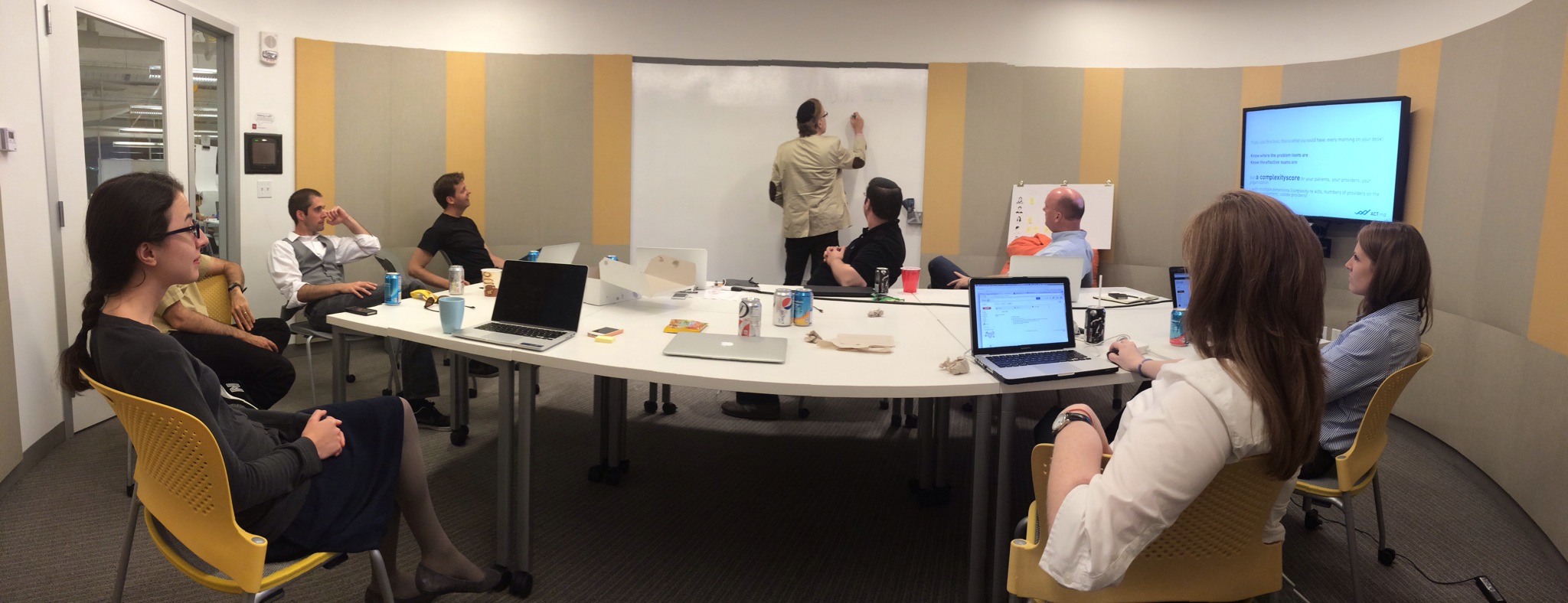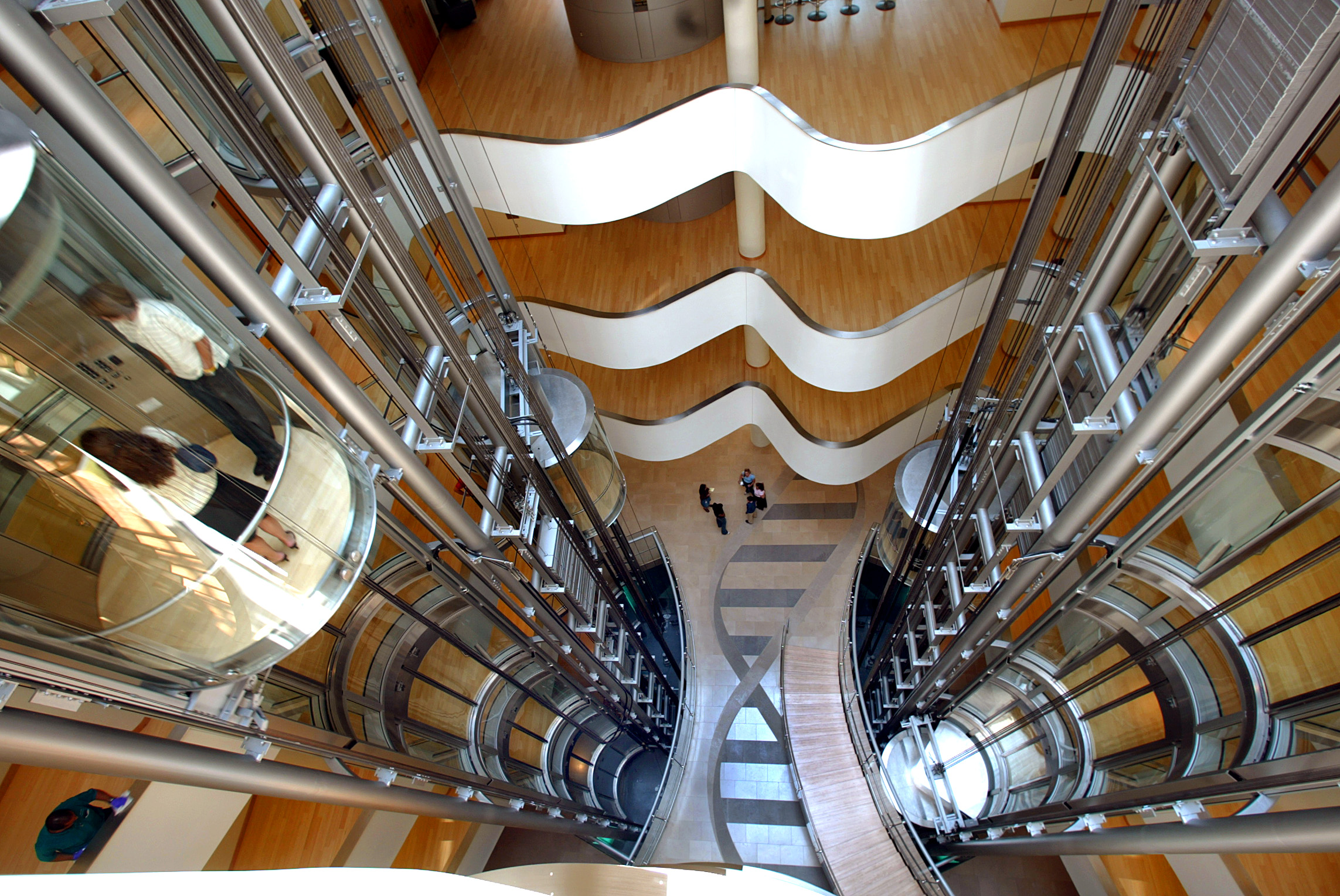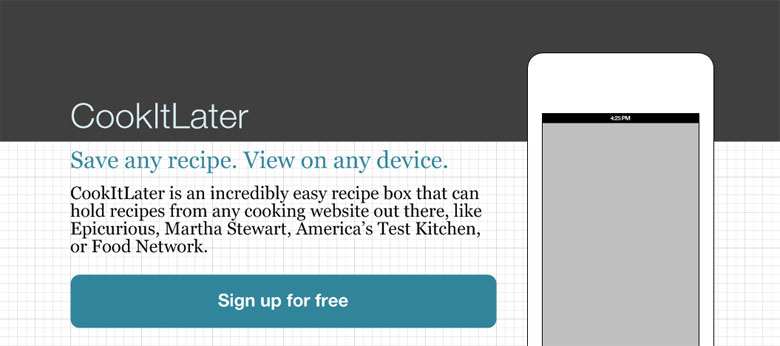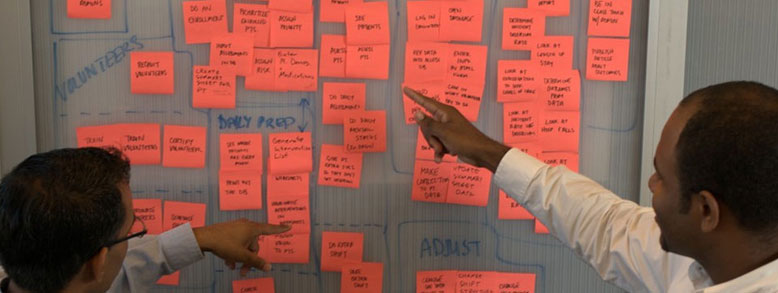User Experience Design
First as a software developer, and now as a user experience designer, my career has been devoted to serving healthcare providers, researchers, insurers, patients, and their families with highly appropriate and highly effective web and mobile applications.
I blend my computer science and human-computer interaction backgrounds into a systems approach to design, comprehensively integrating many skills:
- ethnographic research
- interaction design
- graphic design & typography
- high-fidelity web prototyping
- and usability analysis.
My goal with this approach is nothing short of delighting users while simultaneously advancing discovery, increasing ROI, or improving health.
I also spend a lot of time thinking about how to best build relationships between designers and developers. The Clickframes web application framework was an early fruit of that labor. In 2012, I released a set of software development heuristics for interaction designers to better self-critique their work as it transitions from idea to implementation. I also speak to professional organizations locally about UX leadership in software teams.
Sharpen (2023–present)
Sharpen can assess a child’s risk of reading challenges before they start school and then get an elementary-age student up to grade level in reading through an innovative program that is science-based and parent-directed. As Sharpen’s VP of User Experience and Engineering, I get to collaborate with passionate reading experts and parents — so all children can achieve early literacy success.
Activate Care (2012–2023, formerly ACT.md)

At Activate Care, I served as VP of User Experience, leading research and design of our social needs care navigation platform. My work began as our product’s designer and front-end developer; that led to recruiting and directing a team of exceptional designers and researchers, collaborating with peers in product management and engineering to achieve meaningful user outcomes.
Novartis Institutes for Biomedical Research (2011-2012)

I led global UX design projects for web and mobile drug-discovery applications serving researchers across all disease areas and in our business divisions. I also served as the primary design contact for NIBR’s software development community, managing our corporate web user interface guidelines and library of reusable UI components.
CookItLater (2010)

CookItLater solved a nagging problem of the modern internet: instead of saving recipes within each food website’s proprietary recipe box, use an independent recipe box that integrates with all the top sites. CookItLater scraped recipes with a single click, giving its users a copy that was easy to access and easy to read on a laptop, on a smartphone, or on a tablet.
I designed the site with Visio and Photoshop; built it with PHP, MySQL, CodeIgniter, and Clickframes on the back end; and HTML5, CSS3, and jQuery on the front end. The website was built and designed for mobile first using progressive enhancement.
Children’s Hospital Provider Portal (2009-2010)

In late 2009, Children’s Hospital Boston (CHB) sought to more closely collaborate with Atrius Healthcare, a key source of referrals. Atrius had recently worked with Beth Israel-Deaconess Medical Center to implement a simple but effective EMR-to-EMR integration, called “the magic button,” allowing Atrius physicians to access, with a single click, a patient’s Beth Israel records within their own Epic software. CHB wanted more than basic feature parity, so our six-person team, the Informatics Solutions Group, was tasked with investigating the needs of referring pediatricians and their practices, then designing and implementing a web-based portal to serve them.
We drew up a comprehensive research plan to guide our contextual interviews with over a dozen diverse practices in eastern Massachusetts. We also met with CHB leadership and attending physicians to understand how they perceived patient referrals, practice communication, and coordination of care.
I synthesized our findings into high-impact insights, which we delivered to the hospital’s IT leadership using formal presentations, detailed mental model diagrams, and personas.
As we transitioned into the design phase, we were challenged to create a web portal which would satisfy pediatrician needs and meet the standards of modern web applications while upholding the hospital’s strict security rules and integrating with CHB’s existing patient data APIs (both Epic and Cerner). Continually throughout the design process, we conducted paper prototype sessions with CHB stakeholders and Atrius physician, collecting valuable feedback and making critical changes before any code was written.
I collaborated closely with our software engineers and quality assurance analyst to see the design through to implementation. I composed and organized all interface requirements using Clickframes, and wrote all the client-side HTML, CSS, and JavaScript/jQuery code.
During implementation we continued to meet with potential users for feedback on the software– users who became important advocates for the software’s continued success.
- Research plan
- Research presentation
- Clinical persona
- Specialist referral alignment diagram
- Emergent referral alignment diagram
- Portal wireframes
- Implementation screenshot
MyHELP (2009-2010)

The Hospital Elder Life Program (HELP) at Hebrew Senior Life and Yale University School of Medicine works with hospitals and eldercare facilities around the world to implement its proven system for drastically reducing incidence of delirium among hospitalized elders. HELP offers commercial licenses of it system together with professional services to guarantee success at participating facilities. Its small staff was grappling with success, burdened by the administrative tasks involved in the marketing and licensing process, and struggling to collect regular outcomes data from all their sites.
HELP approached our team for technological guidance. We began by learning their full contracting and implementation process, then interviewing staff from participating hospitals and elder care centers in the United States and Canada. Our findings informed the design of a new customer management system called MyHELP.
MyHELP gave administrators the communication and reporting tools they needed to support prospective and active sites. Prospects and participants used MyHELP to easily access educational materials, submit application forms, reach out to fellow sites, and report their success rates to further delirium research.
Eagle-i (2010)

At the end of 2009, the Eagle-i Consortium, based at Harvard Medical School’s Center for Biomedical Informatics, was still in the early stages of developing their NIH-funded “resource discovery network.” The geographic challenges of a nationwide, nine-institution consortium only compounded their especially broad project goals. Evan Pankey and I were hired to plan and execute a six-week, cross-country user research project with the hopes of bringing clarity to researchers’ needs and establishing a successful product strategy. Budget constraints prevented us from personally performing interviews outside of Boston, so our project plan included the remote training of team members at all Eagle-i sites.
After drafting a provisional research protocol, we conducted several interviews at Boston research hospitals, building a deep knowledge of research resources like genetically-modified mice, fish, and primates; human health data sets; and core facilities. Our experiences within Harvard helped us refine our research protocol and develop training materials for the eight other participating sites.
We kicked off the wider research endeavor with Internet-based training sessions and followed up with each site by phone and e-mail to provide guidance and answer questions about interview participant selection and interview techniques. After reviewing each interview’s audio and transcript, we gave the interviewer feedback on his or her performance and targeted advice to improve subsequent interviews. In total, these distributed interviewers contributed 29 interviews covering one or more subject areas.
As interview material arrived, we synthesized our findings into personas, mental models, contextual scenarios, feature set, and design recommendations.
We presented our findings and design materials to the Harvard-based implementation team and representatives from each site before Eagle-i’s March 2010 group meeting in Puerto Rico, where our findings were integrated into their wider project plan.
- Project timeline
- Research plan
- Mouse use workflow diagram
- Researcher personas
- Researcher presentation
GrantCentral (2009)

Harvard’s Clinical and Translational Science Center (CTSC) runs the Harvard Catalyst website, which connects researchers of all stripes to the institutional resources they need to advance discovery. Their leadership charged our team to develop groupware tools that help research teams collaboratively write grant applications. As medical informaticists, CTSC leaders had many technological ideas ranging from real-time, Google-style document composition to auto-generated NIH biosketches. Given their six-month schedule and budgetary constraints, our team provided a process to understand the goals and pain points of their target audience – junior researchers – and identify the product features which would have the greatest impact.
We launched a rigorous research process comprising two dozen contextual interviews (which spanned career levels and research areas), competitive analysis, and online surveys. We synthesized our findings into personas, mental model diagrams, and provocative “key quotes” that we presented to CTSC leadership.
Leveraging the framework provided by our research data, we transitioned into design. We developed scenarios that described how our personas might use the GrantCentral product, then used them to build consensus among CTSC leadership for the ultimate feature set. We launched an extensive paper prototyping process, engaging many of our former interview participants. Eventually, our design took full shape in detailed visual mockups.
During development, we continued to gather feedback from our primary audience and refine the design and implementation. We also worked closely with the CTSC’s communications staff on marketing materials for site launch.
In November 2009, we presented the GrantCentral software and our goal-directed design process to the American Medical Informatics Association annual conference.
- Project brief
- Research findings and design directions
- Grant application alignment diagram
- Researcher personas
- Initial sketches
- Implementation screenshot
- AMIA conference poster
GrantSpaces (2009)

After the success of GrantCentral, our team brainstormed how we might spin off the open-source software as a standalone product, GrantSpaces.
I developed a full set of newly-styled mockups and then worked with other team members to pitch the concept as an entry in the MIT 100K Executive Summary contest. GrantSpaces reached the semi-final round, and received very positive, constructive feedback from contest judges.
Indivo 4 (2008)

In winter 2008, I was asked to develop a series of preliminary concepts for a redesign of the Indivo personal health record platform.
I tried to integrate several emerging trends in social media that mapped well to health communication: tagging, commenting, news feeds, sharing, third-party applications, data feeds. I also wanted to stress the personal nature of a personal health record by using photographs and family-centric networking.